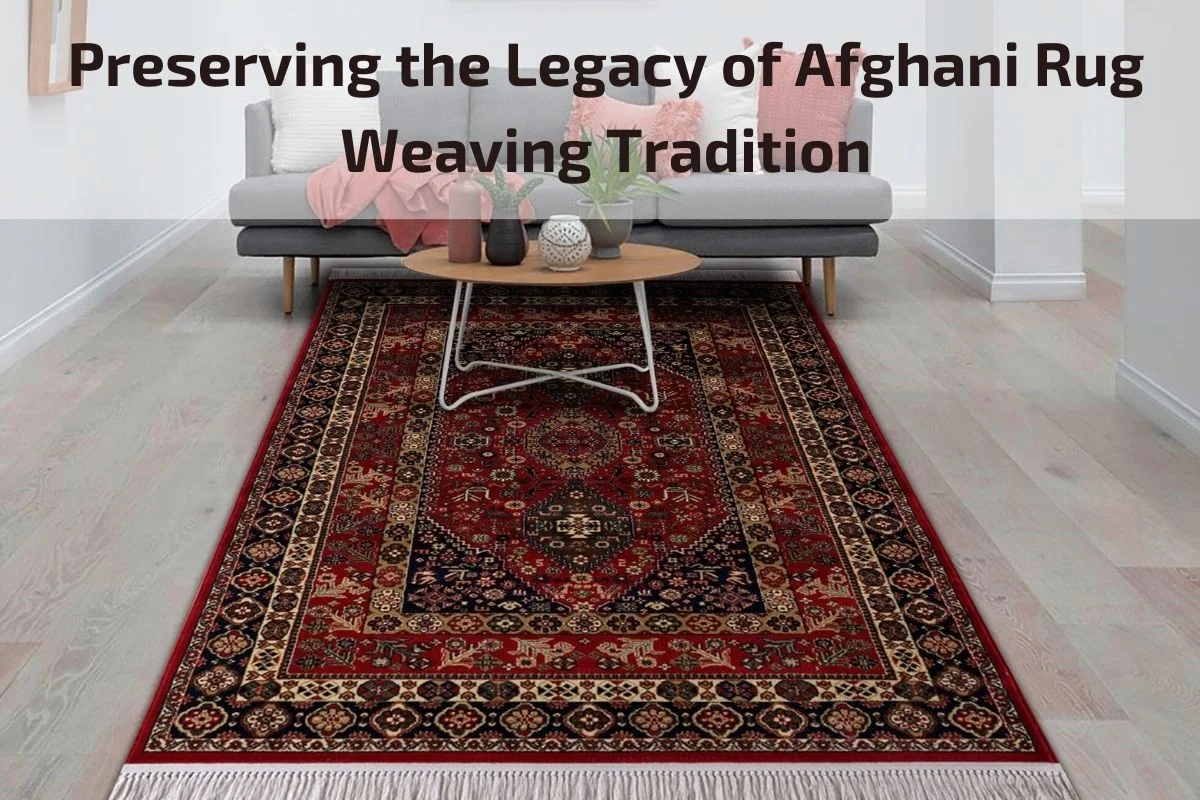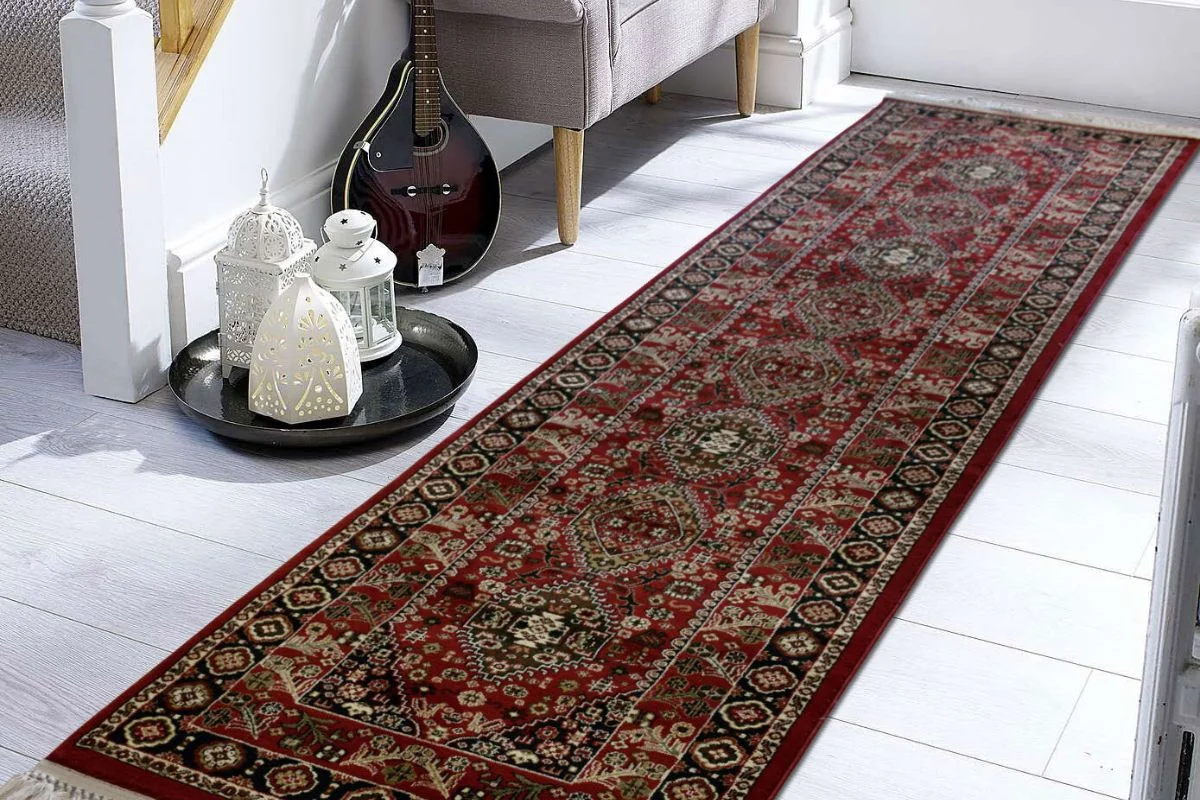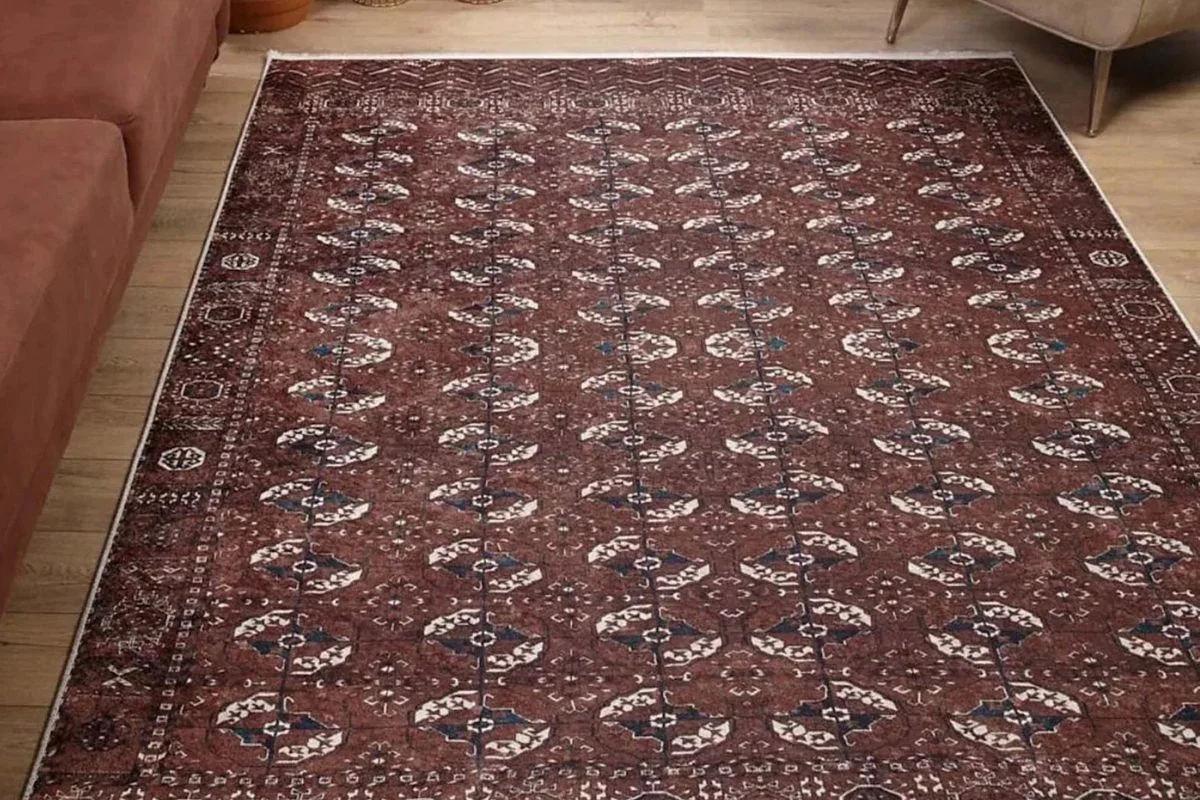Preserving the legacy of Afghani rug weaving tradition is not merely about safeguarding a craft; it’s about honoring a cultural heritage that spans centuries. Afghani rugs, renowned for their intricate designs, vibrant colors, and unparalleled craftsmanship, are more than just floor coverings—they are symbols of tradition, artistry, and resilience.
For generations, the art of rug weaving has been passed down through Afghan families, with each rug bearing the imprint of centuries-old techniques and motifs. However, in recent times, this cherished tradition has faced numerous challenges, including political instability, economic hardships, and the rise of mass-produced imitations.
Despite these challenges, there is a growing recognition of the importance of preserving Afghani rug weaving tradition, not only for its cultural significance but also for its economic impact on local communities. By supporting traditional rug weavers and artisans, we not only ensure the survival of a cherished craft but also empower Afghan families to sustain their livelihoods and preserve their cultural identity.
Brief overview of Afghani rugs
Afghani rugs represent a centuries-old tradition of craftsmanship and artistry that originates from the rugged and culturally rich terrain of Afghanistan. These rugs are renowned worldwide for their intricate designs, vibrant colors, and exceptional quality, making them cherished treasures in both traditional and modern interiors.
Crafted by skilled artisans using age-old techniques passed down through generations, Afghani rugs showcase a remarkable blend of cultural influences, including Persian, Turkoman, and Central Asian motifs. Each rug tells a story, reflecting the unique heritage and history of the Afghan people.
One of the distinguishing features of Afghani rugs is their use of high-quality, natural materials such as hand-spun wool and vegetable dyes sourced from local flora. This attention to craftsmanship and authenticity ensures that each rug is not only a work of art but also a testament to the rich heritage of Afghan rug weaving.
Afghani rugs come in various styles and designs, ranging from tribal and nomadic patterns to intricate city designs. Each rug is meticulously handcrafted, often taking months or even years to complete, with the weavers infusing their creativity and cultural identity into every knot and weave.
Beyond their aesthetic appeal, Afghani rugs hold deep cultural significance in Afghan society, often being used in ceremonies, celebrations, and as symbols of hospitality and prestige. They are treasured heirlooms passed down through families and communities, embodying the resilience and spirit of the Afghan people.
In recent years, Afghani rugs have gained international recognition for their beauty, craftsmanship, and cultural value. Despite challenges such as political instability and economic hardships, the tradition of Afghani rug weaving continues to thrive, providing livelihoods for countless artisans and preserving a legacy that spans centuries.
In essence, Afghani rugs represent more than just floor coverings—they are symbols of tradition, artistry, and resilience, embodying the rich cultural heritage of Afghanistan and serving as timeless expressions of beauty and craftsmanship.
Types and Varieties of Afghani Rugs
Tribal Rugs: Tribal rugs are among the most iconic and sought-after types of Afghani rugs. Crafted by nomadic tribes such as the Baluchi, Turkmen, and Uzbek, these rugs feature bold geometric patterns, intricate motifs, and vibrant colors. Each tribe has its distinct style and design elements, reflecting their cultural heritage and traditions.
Village Rugs: Village rugs are woven in rural communities across Afghanistan, where skilled artisans use traditional weaving techniques passed down through generations. These rugs often feature intricate floral patterns, medallions, and geometric motifs, with earthy tones and natural dyes lending them a rustic charm. Village rugs are prized for their durability and craftsmanship.
City Rugs: City rugs are crafted in urban centers such as Kabul, Herat, and Mazar-i-Sharif, where weavers have access to a wider range of materials and resources. These rugs showcase more intricate designs, finer knotting, and higher quality materials compared to tribal and village rugs. City rugs often feature elegant floral patterns, intricate borders, and rich color palettes, making them coveted pieces for interior décor.
Kilims: Kilims are flat-woven rugs that are popular across Afghanistan and Central Asia. They are woven using a tapestry technique, resulting in a flat surface without pile. Kilims feature bold geometric patterns, stripes, and tribal motifs, often in vibrant colors. They are lightweight, versatile, and well-suited for both floor coverings and wall hangings.
War Rugs: War rugs, also known as “Afghan war rugs,” gained prominence during the Afghan-Soviet War in the 1980s and subsequent conflicts. These rugs feature striking imagery depicting scenes of war, including tanks, helicopters, guns, and explosions. War rugs serve as powerful symbols of resistance and resilience, capturing the turbulent history and enduring spirit of the Afghan people.
Maimana Rugs: Maimana rugs originate from the city of Maimana in northern Afghanistan. These rugs are known for their bold colors, intricate designs, and high-quality wool. Maimana rugs often feature floral patterns, medallions, and geometric motifs, with deep reds, blues, and greens dominating their color palette.
Baluchi Rugs: Baluchi rugs are woven by the Baluchi tribe, who inhabit regions of eastern Afghanistan and western Pakistan. These rugs are characterized by their nomadic designs, featuring geometric patterns, animal motifs, and intricate borders. Baluchi rugs are often woven using hand-spun wool and natural dyes, giving them a rustic and authentic appeal.
Advantages and Disadvantages of Afghani rugs
Advantages of Afghani Rugs:
Rich Cultural Heritage: Afghani rugs are steeped in centuries-old tradition and craftsmanship, reflecting the rich cultural heritage of Afghanistan. Each rug tells a story, showcasing intricate designs, motifs, and weaving techniques passed down through generations.
Exceptional Craftsmanship: Afghani rugs are renowned for their exceptional craftsmanship and attention to detail. Skilled artisans handcraft each rug using traditional weaving techniques and high-quality materials, resulting in durable and timeless pieces of art.
Unique Designs and Patterns: Afghani rugs feature a wide range of unique designs, patterns, and motifs influenced by various civilizations and cultures. From bold tribal designs to intricate floral patterns, Afghani rugs offer a diverse array of options to suit different tastes and preferences.
Natural Materials and Dyes: Afghani rugs are often crafted using natural materials such as hand-spun wool and vegetable dyes sourced from local flora. These natural materials not only contribute to the durability and longevity of the rugs but also ensure environmentally friendly production methods.
Versatility: Afghani rugs are versatile decorative pieces that can enhance the ambiance of any room. Whether used as floor coverings, wall hangings, or decorative accents, Afghani rugs add warmth, texture, and character to interior spaces.
Disadvantages of Afghani Rugs:
Cost: Authentic Afghani rugs can be costly due to the time-consuming and labor-intensive nature of their production. Handcrafted by skilled artisans using traditional techniques, Afghani rugs often command higher prices compared to mass-produced alternatives.
Limited Availability: Afghani rugs may be less readily available compared to mass-produced rugs found in commercial outlets. Authentic Afghani rugs are typically sourced from local markets, specialty stores, or directly from artisans, making them less accessible to consumers in certain regions.
Maintenance Requirements: Afghani rugs require regular maintenance and care to preserve their beauty and longevity. Vacuuming, spot cleaning, and professional cleaning may be necessary to remove dust, dirt, and stains and prevent damage to the rug fibers.
Vulnerability to Imitations: The popularity of Afghani rugs has led to the production of imitation and counterfeit versions that may lack the authenticity and quality of genuine Afghani rugs. Consumers should be cautious when purchasing Afghani rugs and seek reputable sources to ensure authenticity.
Susceptibility to Wear and Tear: Like all handcrafted textiles, Afghani rugs are susceptible to wear and tear over time, especially in high-traffic areas. Proper care and maintenance can help extend the lifespan of Afghani rugs, but eventual wear and fading are inevitable with regular use.
Choosing the Perfect Afghani Rug for Your Home Décor
Selecting the ideal Afghani rug for your home décor involves careful consideration of various factors, including your personal style preferences, the size and layout of the room, and the rug’s design and materials. Here are some tips to help you choose the perfect Afghani rug for your space:
Determine Your Style: Consider the overall style and aesthetic of your home décor. Are you drawn to traditional, vintage, or contemporary design elements? Afghani rugs come in a wide range of styles, from tribal and rustic to elegant and intricate patterns. Choose a rug that complements the existing décor and reflects your personal taste.
Consider Room Size and Layout: Measure the dimensions of the room where you plan to place the Afghani rug. Consider the size and layout of your furniture arrangement, as well as any architectural features or focal points in the room. A rug that is too small or too large for the space can throw off the balance of the room.
Focus on Design and Patterns: Afghani rugs feature a variety of intricate designs, motifs, and patterns inspired by Afghan culture and tradition. Decide whether you prefer geometric patterns, floral motifs, medallions, or tribal designs. Pay attention to color schemes and how they will complement the rest of your décor.
Choose Quality Materials: Afghani rugs are traditionally handcrafted using high-quality materials such as wool, silk, and natural dyes. Consider the texture, durability, and feel of the rug’s materials when making your selection. Hand-spun wool rugs offer warmth and durability, while silk rugs add a luxurious sheen and elegance to the space.
Explore Regional Variations: Afghani rugs come from various regions across Afghanistan, each with its unique weaving techniques, designs, and motifs. Explore the characteristics of rugs from different regions, such as Maimana, Baluchi, or Turkmen, and choose one that resonates with your style preferences and aesthetic sensibilities.
Test Before Purchasing: If possible, view the rug in person before making a purchase. Examine the quality of craftsmanship, knot density, and color accuracy. Feel the texture of the rug and assess its thickness and pile height. If purchasing online, request swatches or samples to ensure that the rug meets your expectations.
Consider Maintenance Needs: Consider the maintenance and care requirements of the Afghani rug before making your decision. Some rugs may require more frequent cleaning and upkeep than others, depending on factors such as material, pile height, and colorfastness. Choose a rug that aligns with your lifestyle and maintenance preferences.
Maintenance and Care Tips for Afghani Rugs
Regular Vacuuming: Vacuum your Afghani rug regularly to remove dust, dirt, and debris that can accumulate over time. Use a vacuum cleaner with a brush attachment, and vacuum in the direction of the rug’s pile to prevent damage to the fibers.
Rotate Periodically: Rotate your Afghani rug periodically to ensure even wear and fading. By rotating the rug every few months, you can distribute foot traffic and sunlight exposure more evenly, helping to maintain the rug’s appearance and integrity.
Spot Clean Spills Promptly: Attend to spills and stains promptly to prevent them from setting into the rug fibers. Blot the spill with a clean, absorbent cloth or paper towel to soak up excess liquid. Avoid rubbing the stain, as this can cause it to spread. Use a mild detergent or carpet cleaner diluted with water to gently clean the stained area, then blot dry with a clean cloth.
Avoid Direct Sunlight: Protect your Afghani rug from direct sunlight, as prolonged exposure can cause fading and discoloration. Use window treatments such as curtains or blinds to block out harsh sunlight and minimize UV damage to the rug.
Professional Cleaning: Consider professional cleaning for your Afghani rug every 12 to 18 months, depending on usage and soiling. Professional rug cleaners have the expertise and equipment to deep clean and refresh the rug without causing damage to the fibers or colors. Choose a reputable rug cleaning service experienced in handling delicate handmade rugs.
Use Rug Pads: Place rug pads underneath your Afghani rug to provide cushioning, prevent slipping, and protect both the rug and the floor underneath. Rug pads also help extend the lifespan of your rug by reducing friction and wear.
Attend to Pet Hair: If you have pets, regularly remove pet hair and dander from your Afghani rug using a vacuum cleaner with a pet hair attachment or a handheld vacuum. Consider grooming your pets regularly to minimize shedding and reduce the amount of pet hair that accumulates on the rug.
Professional Restoration: If your Afghani rug becomes damaged or shows signs of wear and tear, consider professional restoration services to repair and restore the rug to its original condition. Professional rug restorers can mend tears, reweave damaged areas, and address issues such as moth damage or water stains.
Conclusion
In conclusion, Afghani rugs represent more than just floor coverings; they are timeless pieces of art that embody centuries-old traditions, craftsmanship, and cultural heritage. With their intricate designs, vibrant colors, and exceptional quality, Afghani rugs add warmth, beauty, and character to any space.








